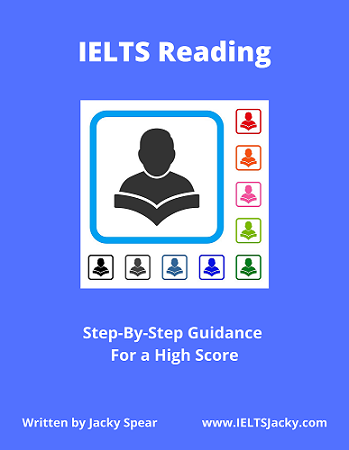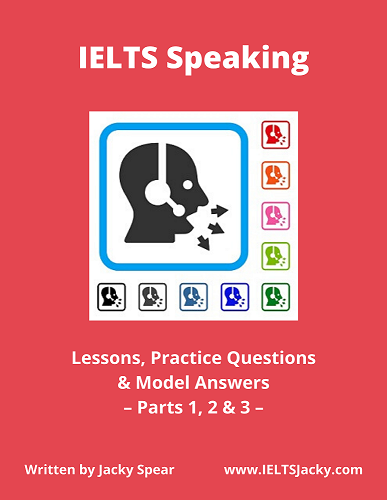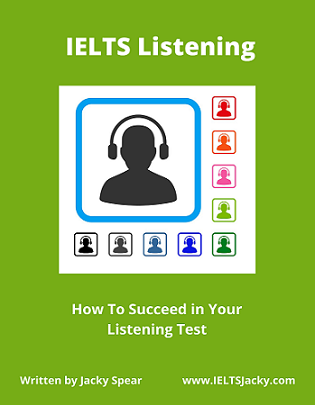IELTS Reading Paper
How To Answer a Multiple Choice Question
This question
comes from a real IELTS reading paper that was set in a past exam. We’ll work through it
step-by-step as I show you exactly how to answer it.
I’ve also written a full page on Multiple Choice Questions where you’ll find lots more information and tips, including another example from a genuine IELTS Reading paper. Click the link to see more.
There are a few key things from the page that you need to know before we start work on today’s question:
- The task. You will be asked to read the first half of a sentence, or a statement or question about the text, and choose the most appropriate sentence ending, response or answer from a number of options (usually 4). Only one is correct although several could appear to be the right one on first reading, so beware.
- Read the questions first. If you do this, you’ll know what you’re looking for when you read the text which will save you lots of time.
- Answer order. The answers come in the same order in the text as the order of
the questions.
- Watch out for distractors. Look out for small words that can completely change the
meaning of a sentence. Prime examples are qualifying words such as every, all,
most, a few.
IELTS Reading Paper – Text & Questions
Here are the
questions and text from the IELTS reading paper we’re going to be working on. If you
want to use it as a practice test, have a go at answering it yourself before
reading my instructions.
I’ve added a PDF of the questions and text that you can download to make the task easier. The answers are at the bottom of this page.
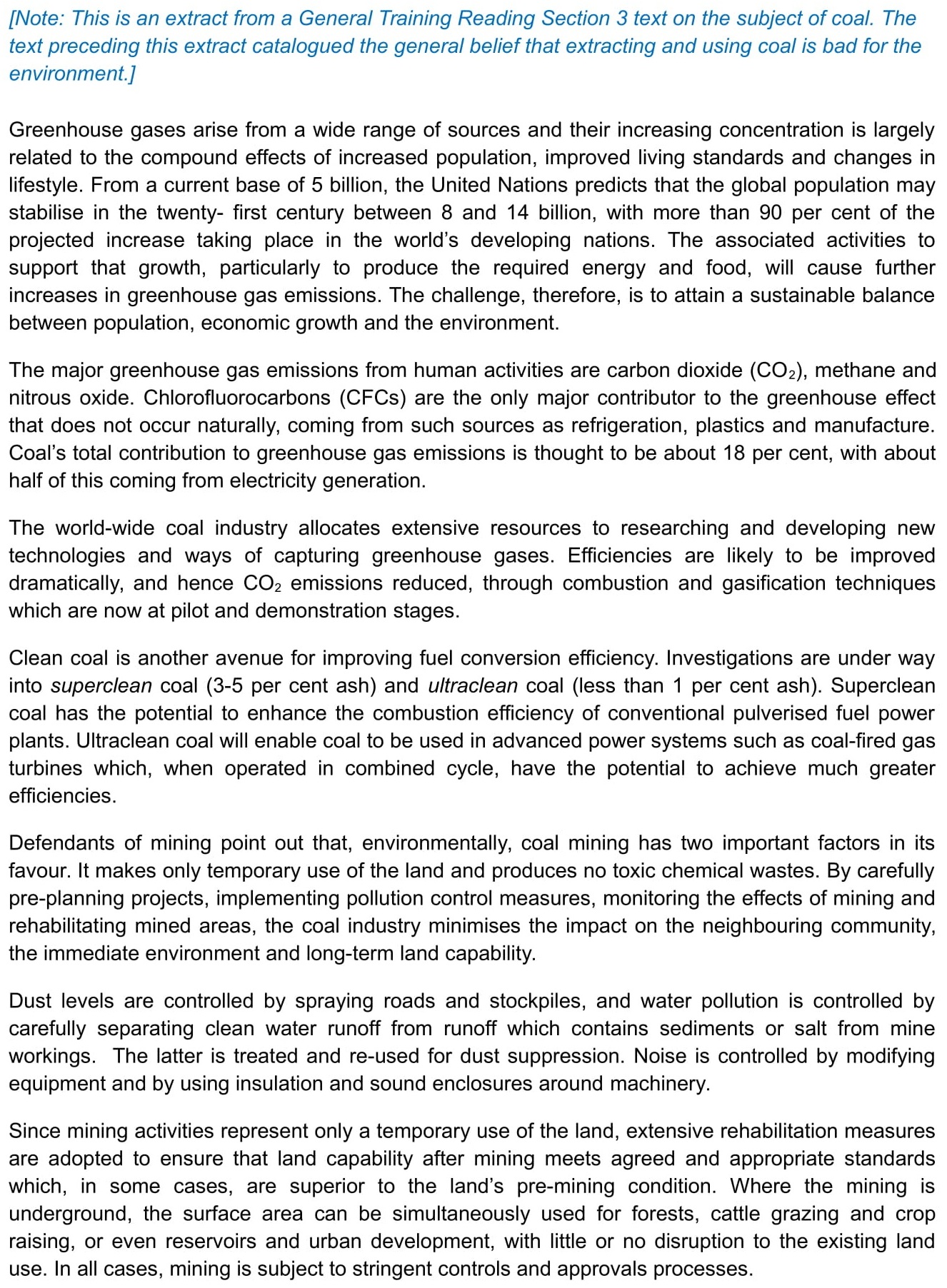
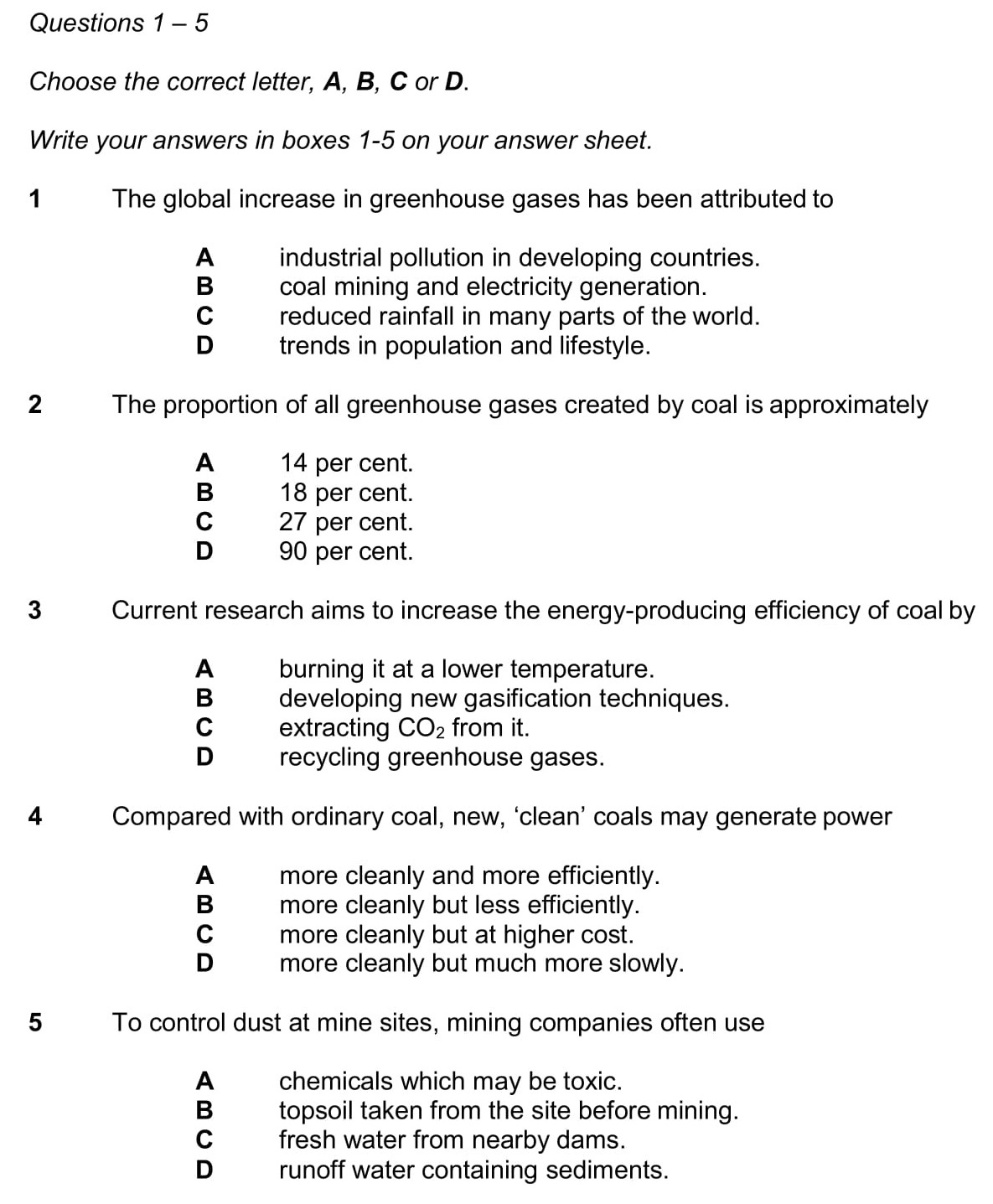
Source of IELTS Reading test practice: Official IELTS Website.
I’ve added a PDF of the text
and statements that you can download to make them easier to work on. The
answers are at the bottom of this page.
Download PDF of this IELTS Reading paper.
Practice IELTS Reading
Paper – Multiple Choice
Step-By-Step Instructions
1) Read through the questions. This will get you thinking about the information you’re going to be looking for in the text.
Expect there to be words you don’t understand but don’t worry about this. If they appear in the text, you may be able to work them out in context, or from synonyms that are used instead.
2) Skim read the text. Your aim is to get a general understanding of it.
3) Now return to the questions and read the first one in detail.

There are two tasks to complete to find the correct ending to the sentence:
- Locate the part of the text with the answer in.
- Read in detail to identify the correct information.
First, underline the key words in the sentence.
1 The global increase in greenhouse gases has been attributed to
Next, scan the first paragraph for ‘greenhouse gas/es’. (If you can’t find the answer here, you may need to scan the second paragraph but it should be fairly near the beginning of the text.)
It occurs twice.

Before reading this paragraph in detail, look for other keywords in the sentence to help you find the location of the answer. Remember that there may be paraphrasing and the use of synonyms.
The sentence is about the ‘increase’ in greenhouse gases, so this is the next word to look for. We find it twice in the very first sentence. This should be where the answer is located.
Greenhouse gases
arise from a wide range of sources and their increasing concentration is largely related to the compound
effects of increased
population, improved living standards and changes in lifestyle.
Three factors are mentioned in relation to the increase in greenhouse gases:
- increased population
- improved living standards
- changes in lifestyle
Check
the answer options to see which match this information. There is just one match.
D trends in population and lifestyle.
Answer: 1D
3) Move on to question 2. Read it carefully and underline the key words.
Where numbers are present, these will always be easier to spot than words so, in this question, we’ll search for key words in the answer options. However, do be aware that words could be used instead of numbers.

Since
the answers come in order in the text in multiple choice questions, start
scanning from the location of the last answer.
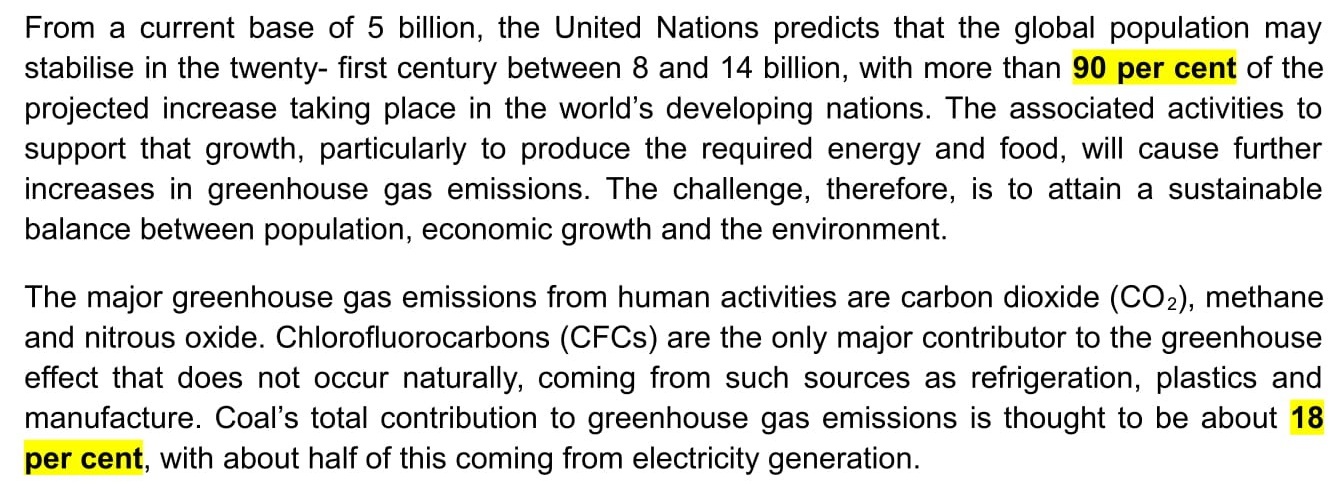
Two
of the answer options are present in the text, ‘90 per cent’ and ‘18
per cent’. Check question 2 gain to be sure you know what information
you need to find, that is, ‘what proportion of all greenhouse gases are created
by coal’. Then, read the two sentences containing potential answers to find the
correct information.
It’s the second sentence.
Coal’s total
contribution to greenhouse gas emissions is thought to be about 18 per cent, with about half of this coming from electricity generation.
Answer: 2 B
4) Read question 3 next and decide what it’s about.
The main idea is the ‘efficiency’ of coal to produce energy so, this is the key word to scan for, although a synonym may be used.
3 Current research aims to increase the energy-producing efficiency of coal by
Again, start scanning from the location of the last answer. We find the word we want in paragraphs 3 and 4.
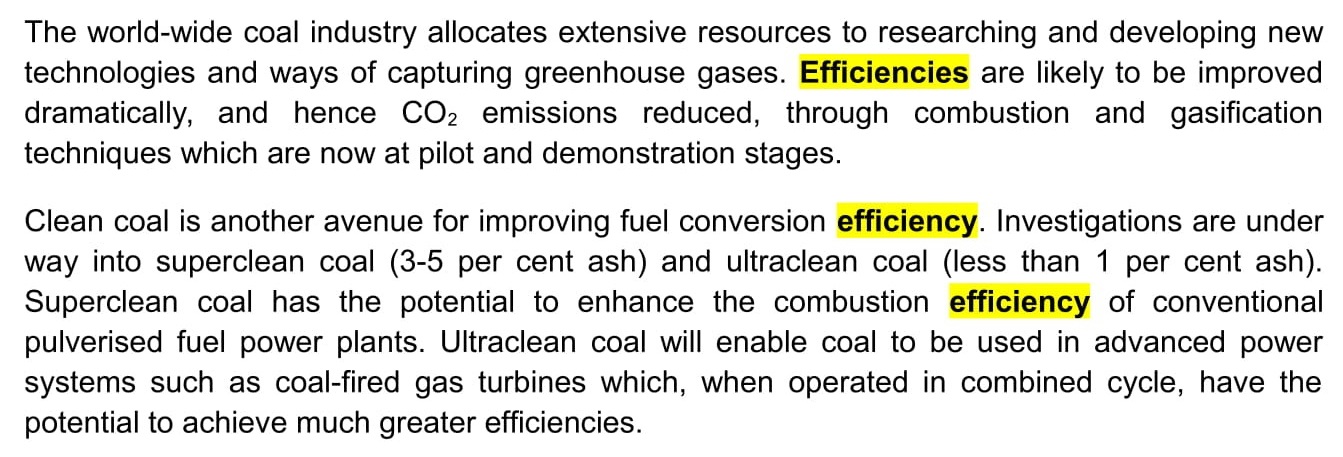
Check
question 3 again to be sure you know what information you need to find, that is,
‘how current research aims to increase the energy-producing efficiency of coal’.
Also,
read the four answer options to remind yourself what they're about.
A burning it at a lower temperature.
B developing new gasification techniques.
C extracting CO2 from it.
D recycling greenhouse gases.
Now skim read the paragraphs to get a general understanding of the information they contain. Is there a clear match of information? No, there isn’t. We’re going to have to work a bit harder to find the answer.
The second paragraph is about ‘cleaning coal’ but no detail is given as to how this will be achieved. It contains no information related to any of the possible answers. We can thus discount it and focus on the first paragraph.
Read this paragraph in detail.

There’s no obvious match of information with any of the options A – D, so we’re going to have to decide on the correct one by a process of elimination.
Work through each option looking for key words or ideas that match the information in the text. The quickest way to do this will be by trying to match the easiest ones first rather than doing them in order. So,
D is about ‘recycling’ greenhouse gases but there’s no mention of this or anything related to it in the text. D is not the answer.
C is about ‘extracting CO2’. CO2 is mentioned but as a result of the efficiencies not the reason for them. C is not the answer.
A is about ‘burning coal at lower temperatures’ greenhouse gases but there’s no mention of this or anything related to it in the text. A is not the answer.
This
leaves us with option B.
B developing new gasification techniques.
Although there is no specific mention in the text of ‘energy-producing efficiency’, a clear link is made between ‘efficiencies’ and ‘gasification techniques’.
Efficiencies are likely to be improved dramatically, and
hence CO2 emissions reduced, through combustion and gasification techniques which
are now at pilot and demonstration stages.
I’m
not sure what ‘gasification’ means but it doesn’t matter. The information is a
close enough match for this to be the answer.
Answer: 3 B
This has been a tricky question to answer. If you are struggling with a particular question, or aware that you’re spending too much time trying to work it out, make an educated guess and move on. Never leave the answer blank. A guess gives you a 25% chance of being right.
5) We’ve reached question 4.

We
already know which paragraph the answer is in as we considered it for the last
question.

It’s
common to have quite similar answer options that it’s difficult to decide
between and here we have a good example of this. In this situation, you need to study them in detail to identify the
differences.
Take particular note of qualifying words these options contain such as ‘and’, ‘but’, ‘more’ and ‘less’.
Again, a process of elimination is probably the best way to approach this question. We’ll start with the options with key words that stand out, that is, C and D.
The key word to scan for in C is ‘cost’, or a synonym of it.
C more cleanly but at higher cost.
There's no mention of ‘cost’ so, this is not the answer.
The key word to scan for in D is ‘slowly’, or a synonym of it.
D more cleanly but much more slowly.
There is no mention of the speed of the process so, this is not the answer.
With C and D eliminated, we can concentrate on the two most similar options, A and B.
A more cleanly and more efficiently.
B more cleanly but less efficiently.
The key difference in their meaning comes in two words – ‘more’ or ‘less’ efficient. Read the paragraph in detail looking for these two words or, most likely, synonyms of them.
There is just one present – ‘greater’, a synonym of ‘more’.
Ultraclean coal will enable coal to be used in advanced power systems such as coal-fired gas turbines which, when operated in combined cycle, have the potential to achieve much greater efficiencies.
We have our answer.
Answer: 4 A
6) Finally, we come to question 5.

The
obvious key word to scan for is ‘dust’, as this is the subject of the sentence. As always, be mindful that a synonym
might be used.
We’re fortunate. ‘Dust’ is quite easy to spot as it’s the first word of the second to last paragraph and also appears in the following sentence.
Dust levels are controlled by spraying roads and
stockpiles, and water pollution is controlled by carefully separating clean
water runoff from runoff which contains sediments or salt from mine workings. The
latter is treated and re-used for dust suppression. Noise is controlled by
modifying equipment and by using insulation and sound enclosures around machinery.
Skim read the paragraph to identify the location of the answer. It’s in the first sentence.
Read sentence 5 and the four options carefully to see which is the best match of information.
Paraphrasing has been used, so the answer isn’t immediately obvious. However, three of them can quickly be eliminated. Do this by looking for key words matches in the text sentence and the four options.
The only one that has any matches is option D – ‘runoff’ and ‘sediments’. Double-check that the meanings match and fill in your answer.
Answer: 5 D
That brings us
to the end of this IELTS reading paper. I hope you’ve found these instructions helpful. As already mentioned, I’ve created a full page on Multiple Choice questions, including a practice question from another
genuine IELTS reading paper. Click the link to visit the page.
Answers
1 D
2 B
3 B
4 A
5 D
Like this page?
More Practice Questions From IELTS Reading Papers
Step-by-step strategies for answering the 12 different types of IELTS Reading questions with examples and practice tests.
You'll Also Find Sample IELTS Reading Papers Here:
IELTS Reading Sample – True, False, Not Given sample test
IELTS Reading Samples – Matching Headings & Diagram Labelling sample tests
IELTS Reading Practice Test – More examples of Matching Headings and a Diagram Labelling questions & how to answer them
More Reading Test Practice – Matching Information sample test
IELTS Reading Exercise – Yes, No, Not Given sample test
IELTS Reading Tests – Two strategies for answering Name Matching questions
Reading Tests For IELTS – Summary Completion test



